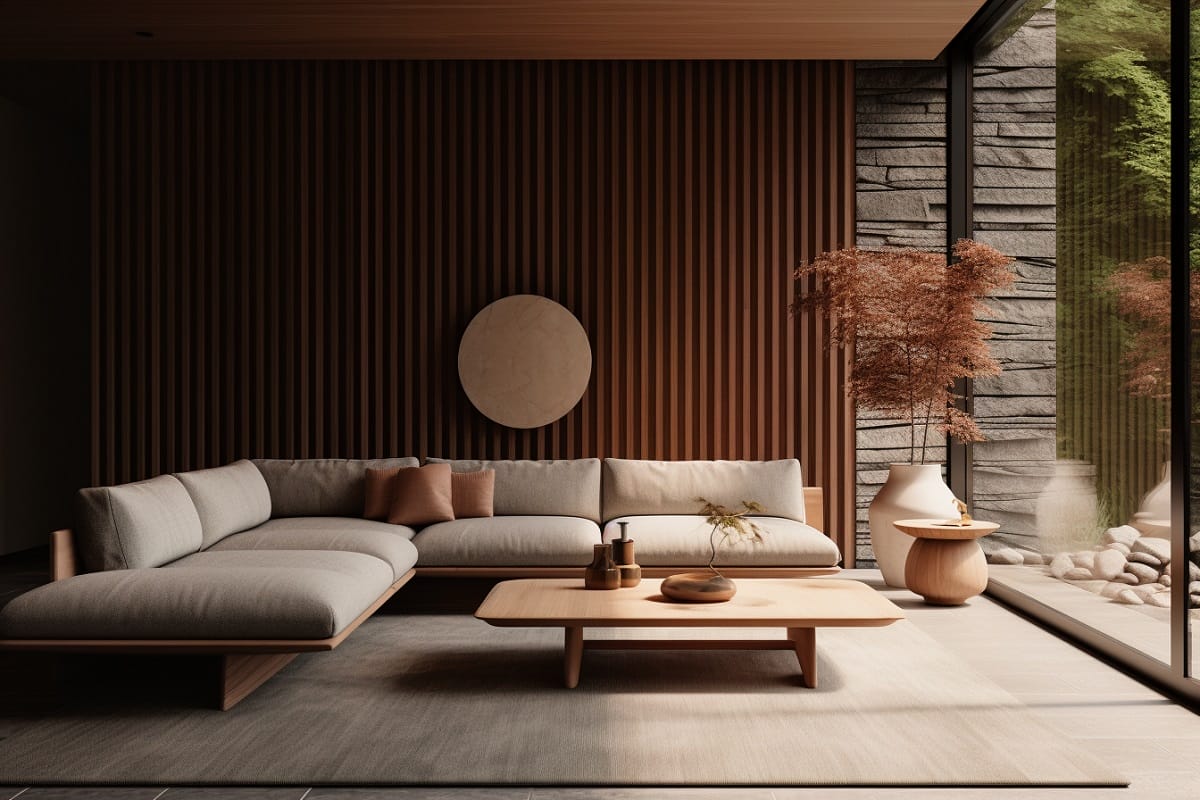Impermanence and imperfection are not flaws in wabi-sabi’s aesthetic, but are everything and nothing. Wabi-sabi lovingly accepts all that ceases to exist and imperfections, from cracking ceramics to worn-out wood tints. It makes your home spaces resemble yourself – a friendly person who accepts philosophy on a daily basis. If you’re interested in infusing the spirit of wabi-sabi into your living space, in the form of ‘decor that does not pretend to be permanent’ or rooted in a Japanese-as-it-gets interior philosophy, check out this home-decor blog on bravely welcoming imperfection into your home.
Unlike many other interior design styles, wabi-sabi actively embraces imperviousness to fleeting trends in favour of designs that enrich life rather than dictate it, and which become more beautiful over time. This involves a mindful approach to selecting materials as well as an embrace of organic, asymmetric lines.
Wabi Sabi
Ultimately, wabi sabi, the Japanese aesthetic of imperfection and transience that’s increasingly absorbed into the mainstream as just another design style, turns out to really be an all-encompassing Weltanschauung and spirituality.
Wabi-sabi philosophy cherishes simple forms, natural materials and accepting things as they age. A home that incorporates some aspect of Wabi-Sabi can be achieved through a series of actions: Aged furniture techniques like unusual twists, warps, chipped paint and worn areas that make the furniture look older and more natural Enhancing these elements with natural goods such as wood and stone which are also intertwined with time and wear. Each leaf of the stone has its own story.
Have one or two choice pieces of furniture in the room, but this furniture should reflect what Provenza calls ‘rustic simplicity’ and ‘a sense of handwork’. His own black Breccia Quartzite collection incorporates veining, mesmerising mineral bits of burnt brown and beautiful grey-blue.
Shizen
While enjo-kyo emphasises connecting with nature, Shizen stresses authentic simplicity, as well as being down-to-earth and celebrating kinto gata, which means that one can see natural beauty in the sheer imperfection itself, or even the ‘flower in a crack’.
Sustainability-minded designers use materials and furniture pieces made from recycled materials and vintage with patina as a component, and they also use textures and asymmetricality.
The word shizen (pronounced shin-zen) connotes nature in a broad sense that includes not only material objects but also the joy of feeling everything in nature as one, and seeing nature’s forces in an objective sense as opposed to Japanese views that are still very much subjective and individualistic.
Mujo
Mujo, or impermanence and change, is the philosophy that marks Mujo Restaurant of Harris, sister restaurant to Castellucci Hospitality’s Tapas blockbuster Cooks and Soldiers, which sits right next door on Howell Mill Road in 2020.
A sign of wabi-sabi interior design is the embrace of flaws and of the impermanence that they imply; there is a sticking to the prosaic – rustic textures, rough-hewn timbers, objects of natural origin that bind us to the Earth with their ornament of simplicity.
Coming from craft traditions, wabi-sabi favours items with rough-hewn and unrefined surfaces. Something flawed and worn becomes treasured not in spite of its imperfections but because of them: a crack in wood or stain on handmade pottery means it will have been well used, and enchanted with character and a story all its own, in its place in your home.
Ikigai
Finding it takes a lifetime of practice. If you’re having trouble, ask your friends and family for help or see a mentor.
So what’s all the fuss about? Well, ikigai is the Japanese word for something like ‘the reason for which one should wake up in the morning’, or ‘the thing that makes life worthwhile.’ The American writer David Kaplan commented on the web a couple of years ago: ‘Ikigai is popping up everywhere. What is ikigai? No one seems to know.’ But not everyone agrees. Some native Japanese writers view this spate of articles about their ikigai with puzzled amusement.
The philosophy of ikigai accents imbuing something with meaning or imparting happiness, over pure productivity in daily work tasks Efforts such as David Buttner’s ‘Blue Zones’, regions with significant numbers of citizens who live past the age of 100, who identify ikigai through hobbies such as tending gardens or fishing; or meaningful and intimate relationships with loved ones; or sustainable lifestyle choices of utilising natural, low-impact and tannen-imparting furniture, textiles and accoutrement materials to reflect this design philosophy – natural patinaed materials with rustic and organic textures.
Authenticity
Authenticity is one of today’s buzzwords. It means being true to oneself by acting in certain ways according to what your values and psychological needs are, whatever they happen to be. So if you want to become more authentic in your relationships or your decoration choices, you had better take an inventory of all your parts to see where you can be professionally and ethically motivated.
Wabi Sabi places its springs in authenticity, in unevenness and impermanence, unlike modernist design, whose blandness perhaps leans more towards strict vertical and horizontal lines. Wabi Sabi remains organic with cartographic shapes, irregular and asymmetric, celebrating life with lived-in patinas, cracks or worn surfaces. This aesthetic draws on a mantra (which also works as a zen riddle): ‘Repair with gold (or silver)’ – an ancient Japanese technique known as kintsugi – ‘to make imperceptible a ceramic object’s brokenness by nature: in so doing, it comes back even more beautiful because it reminds us of its silent history.’

